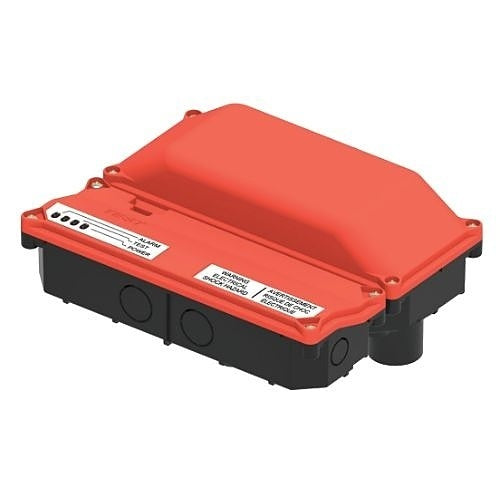Kidde KIR-DDOS Optica Intelligent Duct Smoke Detector Rotary Addressed
The Kidde Intelligent Rotary Duct Smoke Detector is the most advanced and most reliable device in its class. Designed for easy installation and superb reliability, Optica duct detectors represent the perfect balance of practical design, advanced technology and robust performance.
Optica duct detectors feature a unique design that speeds installation and simplifies maintenance. Separate sensing and control sections, optical sensing tube, conformally coated circuit boards and hydrophilic coatings keep contaminants away from sensitive electronics providing longer service life.
When cleaning is required, the assemblies come apart easily and snap back together in seconds. The optical sensing tube incorporates many of the same principles used in the Optica detector. This sensor inherits the power and benefits of this exceptional technology. Optica duct sensors gather analog information from their smoke sensing elements and convert it into digital signals.
The sensor measures and analyzes these signals and compares the information to historical readings and time patterns to make an alarm decision. Digital filters and algorithms remove signal patterns that are not typical of fires, which reduces unwanted alarms.
Features
- Less than 2.5" deep for easy installation and applications where space is tight
-20°F to 158°F (-29°C to 70°C) operating range with 100 ft/min to 4,000 ft/min air velocity rating assures reliability under harsh environmental conditions
- Standard sampling tube spacing for easy drop-in migration from other detectors
- Sampling tube can be installed with or without the cover/sensor in place and can be rotated in 45-degree increments to ensure proper alignment with duct airflow
15.2 to 19.95 VDC operation
- Magnet-activated test switch
- One Form C auxiliary alarm relay for controlling ancillary equipment (e.g., HVAC controls)
- No special tools required for easy access to field connections
- 1-127 rotary switch addressing
- Environmental compensation with differential sensing for reliable, stable, and drift-free sensitivity

